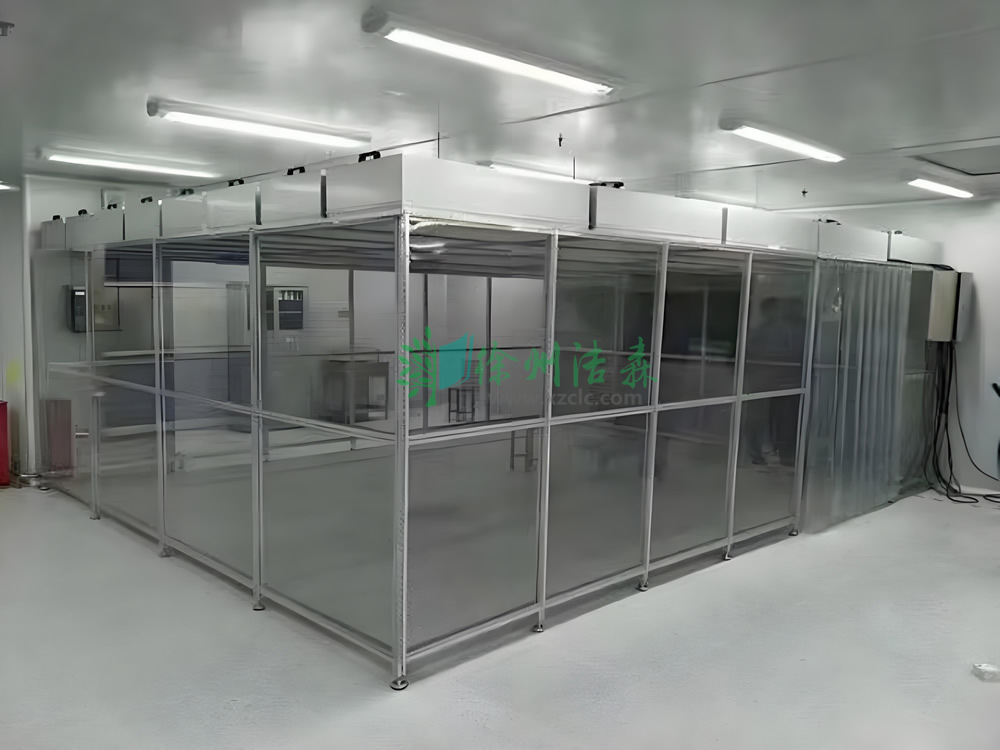模块化洁净室设计
3,835 Views人们常常在对自己的需求了解不多的情况下,就来询问我们洁净室项目的预算价格。洁净室是一项投资,是公司战略和需求的真正资产......。
查看详情搜索整个车站
Striving for Excellence: Key Applications and Solutions of Cleanrooms in Laboratories and Electronics Industry
In today’s rapidly developing technology, clean rooms (also known as cleanrooms) have played an indispensable role as an important clean environment solution in many precision industries. Especially in laboratories and the electronics industry, clean rooms can effectively control pollutants in the environment, ensuring purity and safety in production and research processes. This article will explore in detail the application of cleanrooms in these two industries, as well as how to choose and customize the most suitable cleanroom solution according to different needs.

The basic principles and functions of a cleanroom
A cleanroom is a facility that can provide a high standard clean environment, mainly by removing dust, microorganisms, and other small pollutants from the air through a special filtration system. These sheds typically use HEPA (High Efficiency Particulate Air Filtration) or ULPA (Ultra Low Penetration Air Filtration) filters, which can capture particles as small as 0.3 microns or even smaller.
In the laboratory and electronic manufacturing industry, any small pollutant can lead to product failure or inaccurate experimental results. Therefore, the cleanroom provides a controlled environment, allowing operators to work in a purer space, greatly improving product quality and experimental accuracy.
Application of Clean Room in Laboratory
In research fields such as biology, chemistry, and physics laboratories, clean rooms are the infrastructure for conducting precision experiments. For example, in biomedical research, cleanrooms can be used to cultivate and manipulate sensitive cell and tissue samples, preventing external pollutants from affecting experimental results. At the same time, clean rooms are also used to handle open chemical reagents, reducing the impact of harmful gases and particles on researchers and the environment.
The cleanroom in the laboratory usually needs to be designed and configured according to the specific needs of the experiment, such as adjusting temperature and humidity control, lighting system, and workbench materials.
The application of clean rooms in the electronics industry
The electronics industry, especially the manufacturing of semiconductors and precision electronic components, has extremely high requirements for environmental cleanliness. Cleanrooms are mainly used in this industry to provide a clean assembly or testing environment, preventing dust particles and other pollutants from causing damage or functional failure of electronic components. For example, in the chip manufacturing process, any tiny silicon particles or other impurities may hinder the correct printing of electronic circuits, thereby affecting the performance of the entire device.
In order to meet the special needs of the electronics industry, the design of cleanrooms typically includes advanced air filtration systems, electrostatic control facilities, and precise temperature and humidity management systems. In addition, the size and layout of the dust-free area will be customized according to the specific production needs of the product.
Considerations for choosing and customizing a cleanroom
When choosing and customizing a cleanroom, the following key factors need to be considered comprehensively based on industry characteristics and specific needs:
-Cleanliness level requirements: Different industries and operations have different requirements for cleanliness. Determining the required ISO cleanliness level is the primary step in selecting the appropriate filtration system.
-Space and layout: Designing a reasonable space layout based on operational procedures and equipment size can optimize work efficiency and reduce the risk of cross contamination.
-Temperature and humidity control: Specific products or experiments may require specific temperature or humidity conditions, so the configuration of the temperature and humidity control system should be able to meet these fine requirements.
-Scalability and flexibility: With the development of enterprises and technological upgrades, the design of cleanrooms should consider possible future expansion needs.
In summary, from healthcare to precision manufacturing, clean rooms have gradually become a key facility for ensuring industry standards and improving product quality. Whether in the laboratory or the electronics industry, the application of cleanrooms is the foundation for achieving precise control and efficient production.
徐州杰森无尘室制造有限公司致力于无尘室和无尘室的设计和建造,拥有十多年的经验和专业可靠性。
本网站使用 cookie 改善您的浏览体验。继续使用本网站即表示您接受使用我们的 cookie。本网站收集的数据在美国处理和存储。
您好请留言